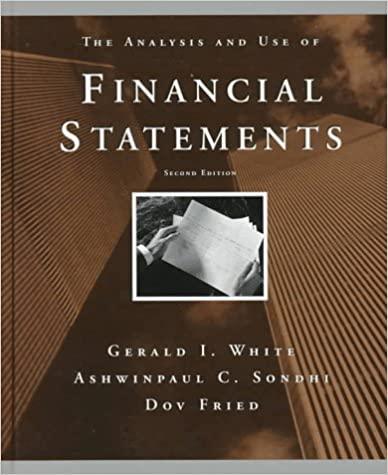Answered step by step
Verified Expert Solution
Question
1 Approved Answer
Depreciation, salvage values, net working capital requirements, and tax effects are all included in these cash flows. You also have made subjective risk assessments of
Depreciation, salvage values, net working capital requirements, and tax effects are all included in these cash flows.
You also have made subjective risk assessments of each franchise and concluded that both franchises have risk characteristics that require a return of You must now determine whether one or both of the franchises should be accepted.
a What is capital budgeting?
b What is the difference between independent and mutually exclusive projects?
c
Define the term net present value NPV What is each franchises NPV
What is the rationale behind the NPV method? According to NPV which franchise or franchises should be accepted if they are independent? Mutually exclusive?
Would the NPVs change if the cost of capital changed?
d
Define the term internal rate of return IRR What is each franchises IRR?
How is the IRR on a project related to the YTM on a bond? For example, suppose the initial cost of a project is $ and it has cash flows of $ each year at Years and What is its IRR? Use the Excel RATE function as though the project were a bond.
What is the logic behind the IRR method? According to IRR, which franchises should be accepted if they are independent? Mutually exclusive?
Would the franchises IRRs change if the cost of capital changed?
e
Draw NPV profiles for Franchises L and S At what discount rate do the profiles cross?
Look at your NPV profile graph without referring to the actual NPVs and IRRs. Which franchise or franchises should be accepted if they are independent? Mutually exclusive? Explain. Are your answers correct at any cost of capital less than
f What is the underlying cause of ranking conflicts between NPV and IRR?
g Define the term modified IRR MIRR Find the MIRRs for Franchises L and S
h What does the profitability index PI measure? What are the PIs of Franchises S and L
i
What is the payback period? Find the paybacks for Franchises L and S
What is the rationale for the payback method? According to the payback criterion, which franchise or franchises should be accepted if the firms maximum acceptable payback is years and if Franchises L and S are independent? If they are mutually exclusive?
What is the difference between the regular and discounted payback periods?
What is the main disadvantage of discounted payback? Is the payback method of any real usefulness in capital budgeting decisions?
j As a separate project Project P you are considering sponsorship of a pavilion at the upcoming Worlds Fair. The pavilion would cost $ and it is expected to result in $ million of incremental cash inflows during its single year of operation. However, it would then take another year and $ million of costs to demolish the site and return it to its original condition. Thus, Project Ps expected net cash flows look like this in millions of dollars:
The project is estimated to be of average risk, so its cost of capital is
What are normal and nonnormal cash flows?
What is Project Ps NPV What is its IRR? Its MIRR?
Draw Project Ps NPV profile. Does Project P have normal or nonnormal cash flows? Should this project be accepted?
When crafting your written assignments, please adhere to the following format guidelines to ensure uniformity and academic rigor:
APA Style: Each assignment should be formatted according to the th edition of the American Psychological Association APA style guide. This standard applies to all aspects of your paper, including intext citations and the reference list.
Step by Step Solution
There are 3 Steps involved in it
Step: 1

Get Instant Access to Expert-Tailored Solutions
See step-by-step solutions with expert insights and AI powered tools for academic success
Step: 2

Step: 3

Ace Your Homework with AI
Get the answers you need in no time with our AI-driven, step-by-step assistance
Get Started


